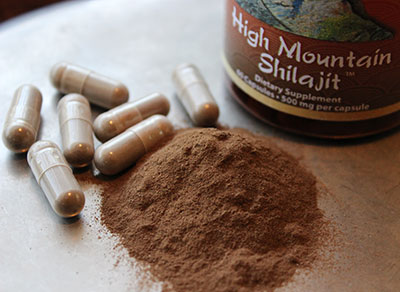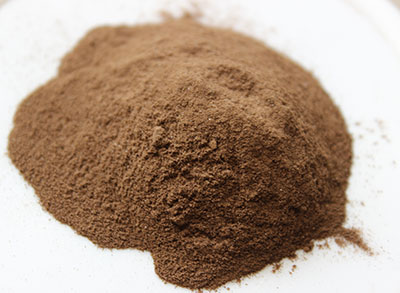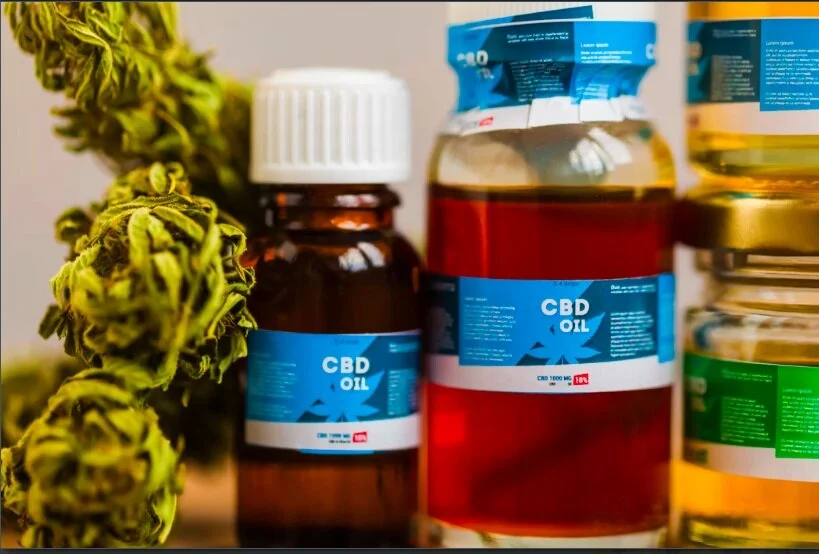WHAT IS SHILAJIT? A MINERAL-RICH SUPERFOOD ADAPTOGEN
Although it is not technically an "herb", it is classified among the top Ayurvedic herbs as a "rasayana" or immune regulating, anti-stress tonic.
It is also called "yoga vahi", which refers to its ability to enhance the effects of other herbs used with it in therapeutic treatments. It is therefore commonly prepared with other tonics like shatavari, mucuna, amalaki, ashwagandha and many others.
We are familiar with two Sanskrit translations of the word meaning "rock invincible" and "conqueror of mountains and destroyer of weakness", both of which further indicate the positive influences for long-term health.
As a mineral substance it is often used in powder form and frequently added to drinks, teas or elixirs. It is known to contain a number of unique health-enhancing compounds such as triterpenes, humic acid, selenium, phospholipids, over 85 minerals and is extremely high in the hard to get nutrient called fulvic acid.
It is, in fact, one of the richest sources of minerals and other elements that are commonly depleted in our soils today, fulvic acid being a major one. Shilajit contains between an average of 40-60% fulvic acid and can be a great way to replenish this mineral deficiency.
What is Shilajit Exactly?
Trapped and preserved within high mountainous regions between altitudes of 10,000 - 18,000 feet, shilajit is predominantly sourced from locations in the Himalaya's (Tibet and Bhutan) but can also be found in parts of Mongolia, Russia, China, India and Pakistan.
It goes by the Latin name of Asphaltum punjabianum and is a form of mineral paste that looks a bit like tar. It is said to literally ooze from cracks in the earths surface during the warmer seasons at these high mountain altitudes.
Asphaltum punjabianum is created over a very long period of time from microbial biodegraded plant-life that has been pressurized by rock. When the rocks heat up the dark mineral pitch exudes from the cracks and is scraped, collected, purified and usually made into a powdered extract rather than left in whole resinous clusters.
WHAT DOES IT TASTE LIKE?
There are different grades and typically the darker powders are stronger in flavor with a somewhat, earthy bitter taste that might not be so appealing first time around. It's not really one of those superfoods that you want to eat straight by the spoonful. We love it blended into hot drinks or shake elixirs as it gives a smoky rich flavor that goes particularly well with certain other superfoods.
History of Use
Shilajit was thought to have been initially used by small Himalayan villages as there are many local stories about its origins coming from these areas.
It was first known to have been discovered there after watching white monkeys migrate to steep rocky cliffs to consume the thick dark mineral substance during the warmer seasons. These monkeys, related to the gray langur, were notably large and virile-looking and shilajit was considered to be the principle life-strengthening ingredient.
Since then, it has been consumed in regions near Nepal, Tibet, Bhutan as well as the Caucasus and Altai mountains in Russia and Mongolia, where it is called "mumijo." It was traditionally consumed with fermented raw milk in parts of North India, Pakistan and Nepal and often used this way in Ayurvedic Medicine.
Shilajit Benefits to Health
A Mineral-Rich Superfood
"Sheelajeet" is a top mineral-rich superfood, containing amino acids, vitamins, trace elements and over 85 minerals in natural ionic form. Ionic minerals are more easily transported and absorbed in the digestive tract because they are "charged" and require less energy for their immediate break down and utilization. (Source)
The mineral content in shilajit is primarily found in two plant-based constituents called humic and fulvic acids. These two ingredients are naturally present in soil that has not been over depleted of nutrients due to topsoil over-cultivation.
MINERAL DEPLETION IS EPIDEMIC
We need the minerals from the foods we eat to assimilate other vitamins and nutrients. Plants get minerals from the soil and transfer them to us when we consume them. However, today it is much more challenging to get the required amount from store bought produce and foods.
A study in 1936, first reported the alarming rate of mineral depletion that modern monocrop agriculture is having on our food supply. Unfortunately, it takes quite a bit of time to rebuild the soil once it is stripped of essential nutrients, in addition to the fact that it is not "cost effective" for most big farming operations to invest in mineral supplementation.
Today we have much less mineral content in mass produced foods than we did 50 years ago due to other factors besides poor farming practices. Now, environmental pollutants as well as things like acidic rain are making it harder to replenish our plant based foods, and livestock who eat them, with the minerals we need for our health and well-being.
We therefore recommend adding in some kind of high quality mineral supplementation to the diet on a regular basis and shilajit can be one of those options.
We highly advise growing your own fruits and vegetables whenever possible. This way you can build nutrient-rich organic soil and adhere to sustainable gardening practices that will help to energize your food. Also, it is good to purchase foods at local organic farmers markets or from small scale farms whenever possible.
High in Fulvic Acid
Shilajit contains substantial quantities of humic substances. These are the principle components found in soil (humus) and are made from the decomposition of organic matter, such as lignin. Fulvic acid is a natural electrolyte extracted from humic minerals.
"Sheelajeet" is very well known in the health world for its high concentrations of fulvic acid, with most quality powders containing between 40-60% fulvic acid.
Naturally occurring in healthy soils, fulvic acid is a key element that makes nutrients absorbable by plants and other organisms. Interestingly, it also acts as a carrier and catalyst to help effectively transfer nutrients and other minerals around the human body. These actions help to promote the movement of other important minerals, especially calcium, phosphorous and magnesium into muscles, tissues and bones.
These effects are well known in Ayurvedic Medicine (called yoga vahi) and is why shilajit is a common ingredient used in many herbal preparations.
There are also ranges of fulvic acid molecules that have the ability to react with cells and uniquely produce new mineral compounds.
"Fulvic acids are one of nature’s most astounding and miraculous molecular substances, perhaps second only to DNA in its importance to life on this planet." Ron Teeguarden
DETOXIFIER AND CLEANSING AGENT
Fulvic acid is a great cleanser and neutralizer of environmental toxins such as plastics, chemicals, pesticides, bad estrogen's and heavy metals that are potentially in the air we breath, the water we drink and the foods we eat.
In addition, the presence of ulmic acid and humic acid also aids in the process of detoxification, purifying the blood as well as assisting in the uptake of nutrients from other foods in the diet.
Humic acid itself is a very powerful chelating agent and is ideal for lessening the detrimental effects of harmful food additives, chemicals and MSG that are found in packaged and fast foods.
PROPERTIES AS AN ADAPTOGEN
Fulvic acid is traditionally viewed as an adaptogen Jing tonic in Traditional Chinese Medicine and is particularly helpful for tonifying the kidneys, increasing both energy and sex drive with its effects as a natural aphrodisiac. It is also accepted as a Chi and Shen tonic, simultaneously satisfying all of the 3 Treasures known in TCM. It is a natural stimulant and energizer that enhances physical stamina and recovery.
Shilajit can be used with the Chinese Jing tonic fo-ti root (or he shou wu) to greater enhance its health attributes.
SHILAJIT BENEFITS:
Helps to metabolize protein
Neutralizes toxins and heavy metals
Restores electrical balance to cells
As an antioxidant naturally boosts immune system
Helps to improve bone density
Increases energy and maintains blood sugar levels
Revitalizes libido and tonifies kidneys
Removes excess kapha from the system
Selenium content for healthy thyroid and metabolism
Contains Significant Amounts of Triterpenes
It is also quite high in triterpenes, one of the powerful health promoting compounds found in reishi mushroom. Triterpenoids, derivatives of triterpene molecules, are found throughout the plant world and in many fruits, herbs and vegetables. However, some foods are particularly high in triterpenes and shilajit happens to be one of them.
According to current research, "Recent evidence supports the beneficial effects of naturally occurring triterpenoids against several types of human diseases, including various cancers."
Other Shilajit Benefits
MAY HELP WITH NEURODEGENERATIVE DISEASES
In a published 2012 article by the International Journal of Alzheimer's Disease entitled: "Shilajit: A Natural Phytocomplex with Potential Procognitive Activity", it was reported that shilajit shows promising results in the treatment of Alzheimer's.
It was found that the fulvic acid content might help block certain protein buildup's, such as beta-amyloid plaques, that are key factors in neurodegenerative diseases. More research is underway to further examine its potential effectiveness as a natural treatment.
HIGH IN ANTIOXIDANTS
"Sheelajeet" activates the immune system with its high concentration of antioxidants.
Fulvic acid and its complexes are the main antioxidants found in shilajit and can play a significant role in boosting the body’s natural defenses.
MAY HELP DISSOLVE CALCIUM CRYSTALS
Shilajit is also being analyzed for its ability to dissolve calcium oxalate and calcium phosphate crystals in the tissues and deposits around the bones.
"Calcium belongs in the bones and when we eat acidic foods, breathe acidic air, endure excessive stress, and other environmental factors, the calcium can leach from our bones (to neutralize the acid) and get deposited in our tissue, around our skeletal structure, and even in our brains. It is speculated that the fulvic acid in shilajit can dissolve the calcium crystals and eliminate them naturally." David Wolfe
Purchasing High Quality Shilajit
You have to be careful when purchasing the powders as there are many fake counterfeits exported from the Indian market place and found on various internet sites. These imitations are made of other soil components and heavily cut with fillers, producing a dark sheelajeet-smelling powder that has none of the benefits of the true variety.
In addition, shilajit is a substance that needs to be properly filtered and processed to remove potential contaminants. All quality powders are made with superior high mountain mineral-pitch resins, ranging from brown to dark brown in color.
OUR TOP CHOICES
Our personal favorite powdered extract is from the company Dragon Herbs and has been laboratory tested for quality and to ensure high concentrations of at least 40% fulvic acid content. It comes in the form of capsules that can be opened and blended with foods and drinks. Banyan Botanicals is another organically certified and trusted brand that comes in tablet form for those of you who don't enjoy the taste of the powder.
How to Use
Shilajit can be consumed as capsules or is available as a powder. We personally prefer powdered extracts that we can blend into herbal teas, hot drinks, nut milks, shakes and various recipes.
It adds a rich smoky flavor to foods and we often use it when making a raw BBQ sauce, cacao recipes or it is great incorporated into a raw pie crust to give it an oven-baked taste. The powder also mixes well with certain other superfoods. We like to use it as a coffee alternative blended with maca root, chaga mushroom and yacon syrup.
Suggested Dosage
Average dose: 1/2t once or twice a day (2-3 capsules)
Higher dose: 1-2t once or twice a day (4-8 capsules)
Precautions:
It is almost impossible to overdose on this mineral powder and it is known to be safe to consume over a long period time. It should, however, be avoided when pregnant according to Ayurvedic texts. It is always a good idea to get the advice of your health care provider when taking prescription medications.
Source: https://www.superfoodevolution.com/shilajit.html






























